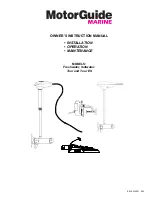
Ameba-D User Manual
User Manual All information provided in this document is subject to legal disclaimers. © REALTEK 2019. All rights reserved.
302
15
Infrared Radiation (IR)
15.1
Overall Description
15.1.1
Introduction
The IR IP is mainly designed to process IR signal with carrier frequency under 500kHz. The hardware IP supports hardware modulation which
can be used on the IR Tx transmission. It also can detect the period of a continuous high or low level signal, and record in Rx FIFO, and then the
software can recognize a received IR signal serial and process it.
The IR IP supports 2 types of IR Rx front end, IR diode or IR receiver module. With the IR diode front end, the IR Rx input signal still has carrier
clock on it. So the software needs to do the de-modulation, which increases the CPU load. If the IR Rx front end is an IR receiver module, the
carrier is filtered by the IR receiver module. So there isn’t carrier on the IR Rx input signal.
To simplify the IR signal model, a serial of IR signals is divided into several “symbols”. A symbol is defined as a number of carrier clock cycles in
a certain period which is called Carrier symbol, or a continuous of high/low level signal for a certain period which is called Space symbol. Carrier
symbol is a real signal that spreads in the air; space symbol is the signal before modulation or after de-modulation.
Carrier
No Carrier
Carrier
No Carrier
L space
H space
L space
H space
Fig 15-1 IR signal model
In Tx mode, firstly, software programs modulation parameter to generate a fixed frequency carrier, and then programs Tx FIFO to generate
space symbols. Tx module modulates and transmits those IR signals. IR Tx flow is shown in Fig 15-2 IR Tx flow.
Carrier
Space symbol
Waveform
Carrier
Carrier
Carrier
No carrier
No carrier
Fig 15-2 IR Tx flow
The document authorized to
SZ99iot
2019-05-15 10:08:03















































